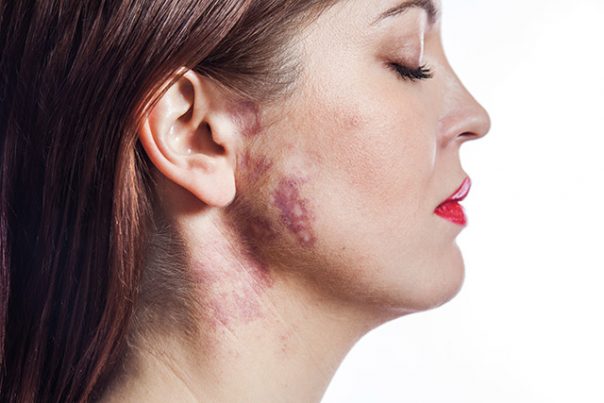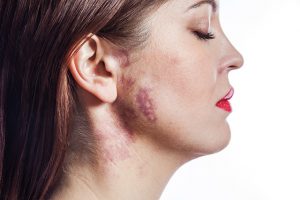
Klippel-Trenaunay syndrome – causes, side effects and treatments at NaturalPedia.com
Thursday, May 03, 2018 by Ralph Flores
http://www.naturalpedia.com/klippel-trenaunay-syndrome-causes-side-effects-and-treatments-at-naturalpedia-com.html

Klippel-Trenaunay syndrome (KTS) is a condition that affects the development of blood vessels, soft tissues, and bones. It is known for its three main features: a red birthmark called a port-wine stain, an overgrowth of certain soft tissues and bones, and deformed veins that include varicose veins or deep vein malformations. The condition usually develops in infancy, where it affects only one leg. The condition, however, may also affect the arms and the upper body area, causing pain, a heavy feeling, and limited movement in the affected leg (or arm).
The cause of KTS is mostly genetic, in particular, due to somatic mutations in the PIK3CA gene. This puts the condition into a group of disorders known as PIK3CA-related overgrowth spectrum (PROS). This also includes MCAP and CLOVES syndromes, hemimegalencephaly, fibroadipose hyperplasia, and epidermal nevus.
Treatment options for KTS are, at best, symptomatic and supportive.

Known risk factors and symptoms of Klippel-Trenaunay syndrome
KTS cases are extremely rare; thus, its etiology is unclear. However, the condition seems to occur sporadically.
The port-wine stain lesion will be visible from birth. It usually appears to be red-purple to bluish in color. Additionally, vein deformities will also be present, and it will affect muscle, bone or visceral organs, like the spleen, liver, pleura, bladder or colon. However, the deformities will be massive on the affected limb, which will be evident once the child starts to walk. His limbs may also start to swell, affecting its girth and gait.
Body systems affected by Klippel-Trenaunay syndrome
The condition affects a person’s limb, as well as the vascular system surrounding it.
Food items or nutrients that may prevent or relieve Klippel-Trenaunay syndrome
Treatment and management options for Klippel-Trenaunay syndrome
While treating KTS is symptomatic, sometimes requiring the use of supplements and surgical procedures, there are natural options available to manage its symptoms. According to PayAfterCure.com: “Cure is unlikely but homeopathic remedies can help alleviate the pain without any side effects.”
Here are some homeopathic treatments that people with KTS could avail:
- Arnica — Cream for topical application and remedy to be taken internally
- Fluoric acid
- Lycopodium
- Staphysagria
- Vipera Berus
- Pulsatilla
Where to learn more
- Antibiotics Linked to Increased Risk of Birth Defects
- Magnesium deficiency symptoms explained: Do you show any of these?
- Vitamin B12 Deficiency in Pregnant Women Linked to Birth Defect
- Know the new science for healthy bones
- How to build healthy bones at any age without prescription drugs
Summary
Klippel-Trenaunay syndrome is a rare condition that affects the development of blood vessels, soft tissues, and bones. It is known for its three main features: a red birthmark called a port-wine stain, an overgrowth of certain soft tissues and bones, and deformed veins that include varicose veins or deep vein malformations. The condition usually develops in infancy, but it may also affect the arms and the upper body area. KTS causes pain, a heavy feeling, and limited movement in the affected leg (or arm).
Treatment options for KTS are, at best, symptomatic and supportive. However, there are natural options available to manage its symptoms. Homeopathic treatments that people with KTS could avail include arnica, fluoric acid, lycopodium, staphysagria, vipera berus, and pulsatilla.
Sources include:
Tagged Under: Tags: Klippel-Trenaunay Syndrome





